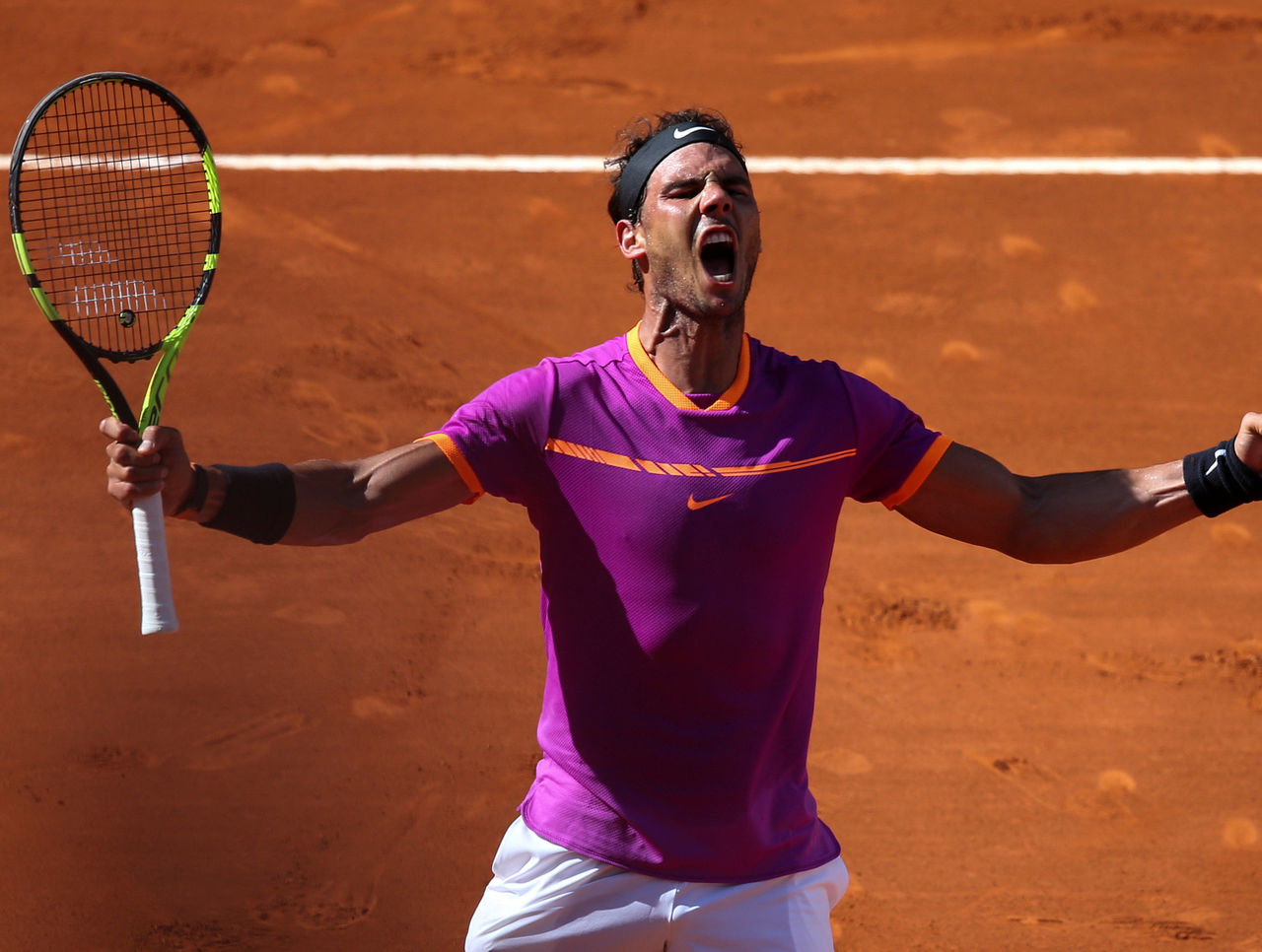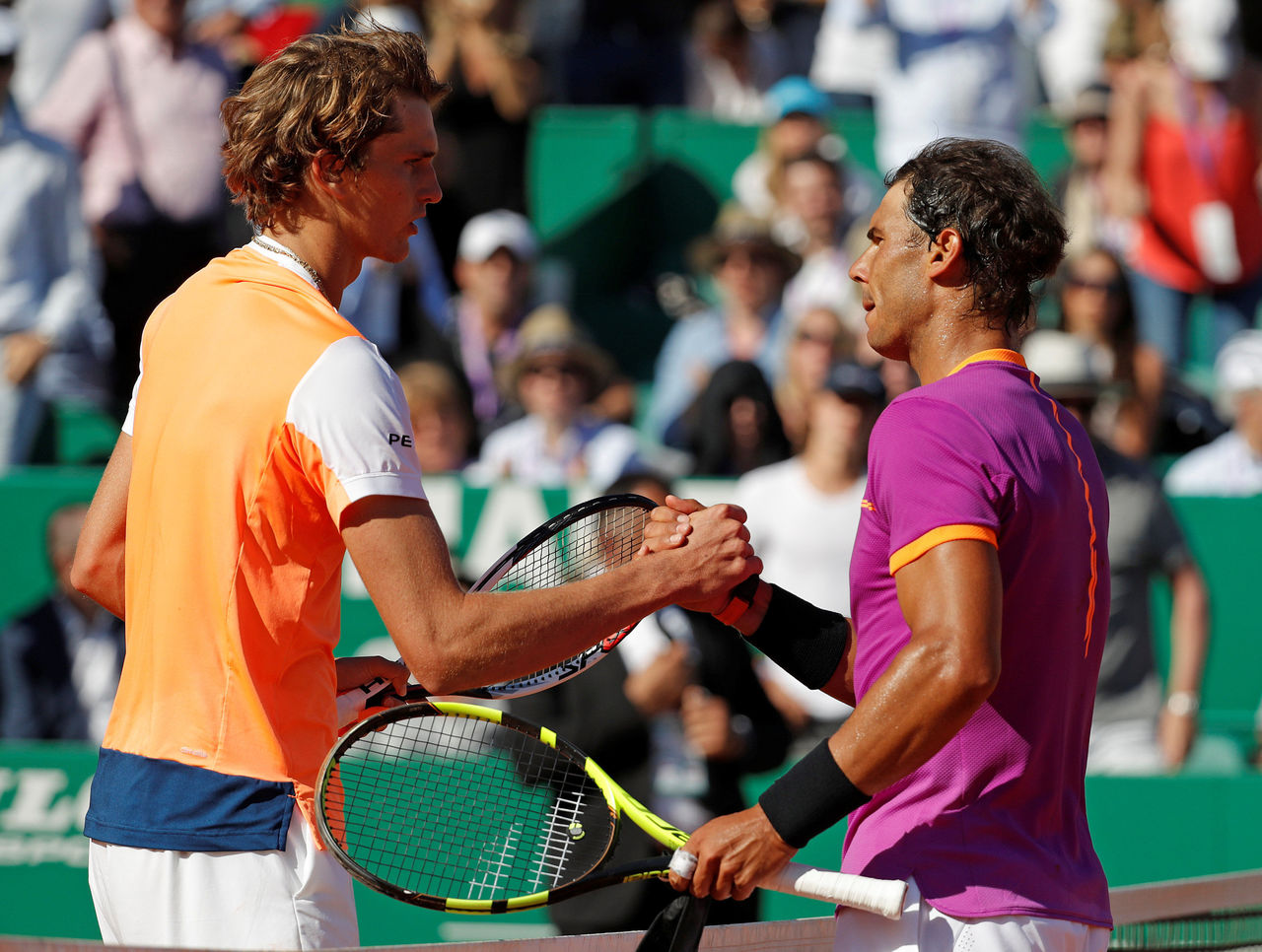A resurgent Rafael Nadal looks poised to claim his 10th French Open title
Rafael Nadal is known to the world as "The King of Clay," but to his people he's known as "El Torero" - the bullfighter.
The 14-time Grand Slam champion earned the moniker by virtue of his Iberian heritage and matador-like kill-or-be-killed playing style. Nike capitalized on the concept and created a bull's head emblem that Nadal wears whenever he's on court; a symbol he dons as a reminder the bullfighter is a creator of death and the fight only ends when the matador slays the bull standing in front of him.
Ernest Hemingway was a notable bullfighting aficionado, and in "Death in the Afternoon," his fanatical non-fiction book on Spanish bullfighting, he wrote: "Bullfighting is the only art in which the artist is in danger of death and in which the degree of brilliance in the performance is left to the fighter's honor. In Spain honor is a very real thing. Called pundonor, it means honor, probity, courage, self-respect and pride in one word."
Following setbacks in the last two years at Roland Garros, Nadal returns with more pundonor than ever. Since the clay-court season started in April, Nadal has dominated virtually every tuneup he's played, climbing from world No. 7 to No. 4, suggesting 2017 is his best chance to claim his 10th French Open crown.

Before being ousted in the Italian Open quarterfinals a week ago by Dominic Thiem (who he could meet in the final four), Nadal was riding a 17-match clay-court win streak that gave him championships in Monte Carlo, Barcelona, and Madrid, where he earned his 30th Masters 1000 title, an all-time record that ties him with world No. 2 Novak Djokovic. In his best pre-Paris run since 2013, Nadal gave the estocada to top-20 seeds Alexander Zverev, David Goffin, Nick Kyrgios, Jack Sock, Thiem, and Djokovic.
As anticipated, Nadal is a favorite to hoist La Coupe des Mousquetaires this year, even though he hasn't won at Roland Garros - or at any major - since 2014. A year after winning his ninth French Open, Nadal lost to eventual runner-up Djokovic in the quarterfinals, ending a 39-match win streak in Paris dating back to his shocking fourth-round upset to Robin Soderling in 2009. Last year, Nadal returned hoping for a triumphant comeback, but a wrist injury forced him to withdraw early in the tournament. That same injury impeded the remainder of his 2016 season; he was absent from Wimbledon and the ATP Finals, resulting in a No. 9 ranking at year's end.
But after months of recovery and training, Nadal entered 2017 in vintage form. The 30-year-old was quiet leading into the Australian Open in January, but decimated the field en route to the final, where he stood opposite longtime frenemy Roger Federer. The five-set battle was one for the ages, with Federer capturing that elusive 18th Grand Slam title. Although beaten, the display of tennis mastery between the two greatest players of the Open era revealed the matador is still alive, and the fight continues.
Related: The Federer-Nadal final was everything we hoped it could be
With Federer out of this year's French Open, that leaves Djokovic - who enters Paris with new artillery in recently acquired coach Andre Agassi - as Nadal's toughest contender. They're nearly even head-to-head (26-24 for Novak), but Djokovic had claimed seven straight meetings, including three on clay, before Nadal's straight-sets victory in the Madrid semis.
However, Djokovic appears considerably more beatable today than 12 months ago, when he completed a career Grand Slam with his 12th major title. If Nadal can overcome the reigning champion in a potential semifinals clash, then only an upset would stop El Torero.
In line for the upset could be 2016 runner-up Andy Murray, but the world No. 1 hasn't made it past the Round of 16 in a major or Masters tournament this year. Perpetual dark horse and 2015 French Open champion Stan Wawrinka, who defended his Geneva Open title before flying to France, is also a threat.
If recent history is foreshadowing, though, the Next Generation looms large, and it sees red.

After capturing his first Masters 1000 title in Rome, Zverev leads the changing of the guard and is the likeliest to steal a Grand Slam from the veterans. Zverev, whose world ranking jumped seven spots to No. 10 following the Italian Masters, has a tough test in Murray's half, but if him and Nadal both reach the final, Nadal has an edge over the 20-year-old, moving to 3-0 head-to-head after feeding the young phenom a pair of breadsticks in Monte Carlo.
With the young guns rising, some might consider this French Open to be Nadal's last opportunity to win a Grand Slam. But Nadal has been written off before, and he continues to slay the bull against all odds. Perhaps that's his modus operandi, though, that when death stares you in the face, it compels you to live longer, for as Hemingway suggests: "When a man is still in rebellion against death he has pleasure in taking to himself one of the Godlike attributes; that of giving it. This is one of the most profound feelings in those men who enjoy killing. These things are done in pride and pride, of course, is a Christian sin, and a pagan virtue. But it is pride which makes the bullfight and true enjoyment of killing which makes the great matador."
(Photos courtesy: Action Images)
HEADLINES
- Nadal 'ready enough' to play in his last Barcelona Open
- Bautista Agut earns tour-level win No. 399 at Barcelona Open
- Tsitsipas beats Ruud to win Monte Carlo Masters for 3rd time in 4 years
- Alcaraz will miss Barcelona Open with troublesome forearm injury
- Ruud finally gets 1st win over Djokovic on 6th attempt